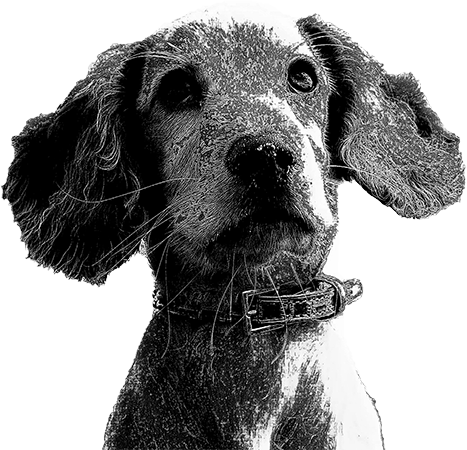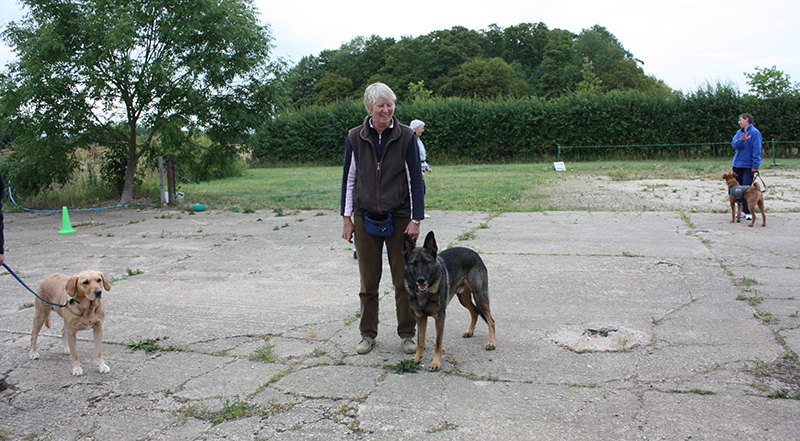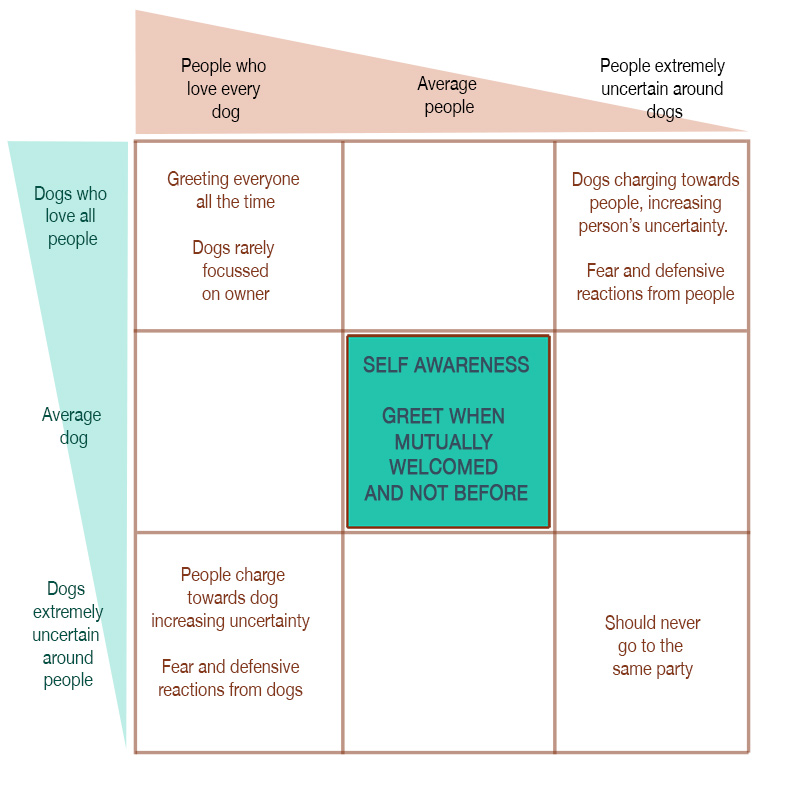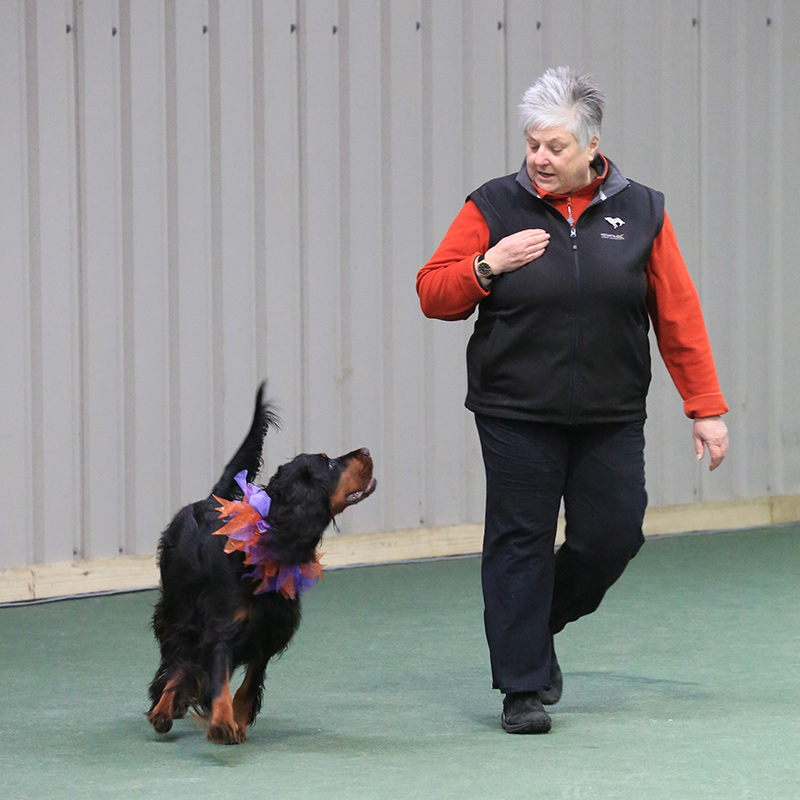Every Dog Every Day
3. dogs can only behave like dogs
Learn how to be a good hunter ~ Be a good companion ~ Be alert, and probably bark when something suspicious occurs.
Social protocols are species specific. We do not socialise with canine protocols, I’ve yet to sniff bottoms in my weekly class and we should not impose our social protocols onto dogs. We are not the same species.
Dogs are very good at being dogs: let’s not try to make them something they are not.
Be alert, and probably bark when something suspicious occurs
This can vary from a person acting in a weird fashion, which is very common amongst young men, all teenagers and some children to plastic bags hitched on a fence blowing in the breeze. Bird scarers, fireworks, hot air balloons can all be perceived as suspicious.
We have nurtured this trait for thousands of years. It was, and in some parts of the world still is, our warning system, our protection. On today’s farm you need a dog at the homestead that will alert you to arriving strangers. Your property is largely unprotected whilst you work in the field.
When I had a sheep farm in Wales I worked around many farms and a “good collie” was considered to be one that would prevent the farm sales rep. from placing their foot outside their car. A swift nip to the ankle was all that was required and the sales reps would call no more. Perfect. I did wonder if they left a marker on the gate post for future colleagues to warn of the imminent danger to ankles!
Clients often wish to “stop their dog barking”, but when the dog barks at 2am because someone is peering in your windows you would be quite glad of that skill?
We cannot breed out this unease of strangers or misunderstood events in just a handful of generations. Even a dog reared in an excellent familiarisation program will still hesitate when presented with certain aspects of human behaviour or technology. If you were browsing your local shop and a fridge with two heads appeared at your side wouldn’t you just stand still and wonder what it was? We need to remind ourselves that our twenty-first century environment is largely alien to a dog.
Learn How to be a Good Hunter
We may like to call it play, but the majority of games for dogs are based on refining their hunting skills:
We like: go for a walk in the woods or park:
Dog views as: cruising for the off chance of scent of a prey animal, or checking your patch is still marked.
We like: playing fetch with the dog:
Dog views as: chase moving objects: run after a ball, squirrel, skateboarder, all good practice taking down fleeing prey before it either goes down a hole or outruns you.
We like: teasing by flicking toys:
Dog views as: snatching, biting movement:
catching up with your prey and preventing further movement.
We like: tugging on a toy:
Dog views as: de-gloving your prey of skin and fur, separating the larger animal into smaller parts to rip and dissect.
We like: weed free gardens, fresh dug soil:
Dog views as: digging holes: your pantry for next week’s dinner, raw meat tastes more flavoursome after a week underground. Digging up mice and small critters.
Only a very small percentage of today’s dogs are used as hunters but we still like to enjoy the team-work skills and play time which is at the base of mutual work and enjoyment.
Be Good Companions
Learning to reflect the mood and energy of those around them.
This is a co-operative living skill. If the pack normally rouses for an evening hunt, then wishing to put your feet up and watch TV does not make you a good team hunter. Although some dogs are single hunters, many function as part of a team, taking down larger prey that required several dogs to act co-operatively at the same time. We used these team hunting skills for our own table.
Dogs are very vulnerable to the energy and atmosphere around them. If I want my young collie to approach sheep with steadiness and caution, I only have to mimic the stalking up to the sheep to trigger the same response in the dog. If I wish to catch a particular sheep I will gather them to the corner of a field and as I charge in for the unlucky soul the dog will back me up and grab the same sheep.
As the Gordons quarter the field they hunt for scent of birds, birds we can eat. Crows and rooks are ignored, yuck. If one Gordon goes onto point, the other dogs within range will also come to a complete, frozen stop, often pointing at the first dog.
You can see the same behaviour in a military operation. If the “point-man” comes across the enemy it would be fairly useless if the rest of the troop just continued in a noisy fashion. On cue everyone comes to a stop.
This ability to share our moods is part of the very essence that makes them excellent companions – they share our need to throw balls, sit quietly and read a book or assist with the gardening.
For every characteristic that seems to be a nuisance it can also be a blessing, we just have to learn to develop the blessings and see them blossom whilst the down-side is faded. Trying to stop dogs behaving like dogs, or suppressing their doggy-behaviour rather destroys the point of sharing our lives with dogs. There is a clear path of compromise that ensures both our house, family and dog- friends can live without conflict.

Trying to stop dogs behaving like dogs rather destroys the point of sharing our lives with dogs.
Domesticated? Maybe Not
If we consider the amount of behaviours that are still existing in our domestic dogs but no longer serve any purpose we get a clear mes- sage that our dogs are still very much intact as their ancestors that needed the skills.
1. Rolling in dead slimy animals, fish, rotting carcasses or similar
2. Rolling in excrement, fox, badger, deer, and human (eeeww yuck)
3. Eating faeces – rabbit, sheep, cow, horses
4. Protecting their resources, their bed, their food, their garden, their human
5. Scent marking their territory, over marking the urine of other dogs
6. Chase something that moves
7. Bite something that squeaks
8. Strip the guts out of a toy
9. De-fur a tennis ball
10. Digging up the bedding before lying down
11. Wrapping your tail over your feet to keep them warm
12. Burying bones and toys
13. Vocalising, yowling, when chasing prey
14. Stalking and pointing
15. Rubbing their face along the sofa after eating
I am sure you can add another five behaviours that no longer serve any purpose to our dogs that are fed daily, live in houses with heating, have no need to hunt or defend. Since the selective breeding program of many centuries has not removed these behaviours we cannot now decide we do not like them. They are wired into your dog and the best we can do is not let them have access or practice the nasties.
As much as we try to reinforce the absence of these behaviour the need to employ them does not disappear.

Stopping to admire a tree is a pleasure to be shared with friends, even if the friend only sniffs
Waking Out Together
Very often our perception of “talking the dog for a walk”, is at odds with the dog’s view of “going for a walk with My Person”. The most common areas of conflict are originated in this area:
pulling on the lead,
making faces at passing dogs,
repelling the approach of other dogs,
jumping up at people.
Dogs love to go out and about, they are creatures of the outdoors, often stimulated by different scent, environments and opportunities. As four legged creatures they will move with four different gaits: walk or stroll, trot, canter and gallop. If left to their own internal mechanism your dog would rarely cover much ground at the same gait unless “on a mission”, usually going home, or crossing the countryside to visit their lover. Watch their natural progression when walking off lead or pottering around the garden. There is lots of changing speeds, stopping to sniff and leaving messages.
This IS their walk.
The dogs that are in the size bracket between a Cocker Spaniel and St Bernard are going to be movement compromised when trying to walk at our “walking-out” speed. Their trot covers the ground too fast for our comfortable walk and their walk-stroll means we need to slow down to a cruising-stroll. There is the first conflict – we cannot progress at the same speed without one or the other compromising.
With any training protocol that forces the dog to move at our walking speed when their body is aching to move faster is going to cause stress, usually in the form or unnatural movement: the pacing gait. A daily regime of forced pacing, especially on hard pavement surfaces can, over a few months, cause a plethora of skeletal discomfort. Some dogs simply cannot pace-gait, this is evident in their need to trot a few steps and stop, trot and stop – like walking a yo- yo.
Imagine if you were walking with a 6 year old child, their length of stride is shorter that ours – so whose job is it to compromise? I certainly remember many occasions as a child having to walk-jog to keep up with my father when he was not paying attention to me.
Our differing interests in the walk drive a wedge between us. I live close to a wonderful and quite famous National Trust Garden. A recent American visitor wished to “do the garden”. The garden is laid out in a series of different rooms the third of which is the rose garden. At that time I was rose shopping and the scent of the rose is one of the important priorities when making the choice. On arrival in this rose-room, I took the scenery by my nose, scenting each of the bushes. Within three bushes my friend had disappeared to the next garden. Now is the moment of compromise, do I give up my olfactory shopping or does the disinterested visitor wait for me? I continued shopping, the visitor returned about 15 minutes later.
This garden is to be enjoyed as a shared exploration not a solitary exploration. On return I began to involve her in the shopping and we spend a happy forty minutes deciding on possible options. Heaven.
If your time-sharing partner has a different interest you can either patiently wait for them to satisfy their interest or walk away. But with your dog on a lead, you cannot walk away, so often the dog is forced to give up their interests. I can easily imagine begin taken for walks on a lead around the world’s rose garden and the build up of frustration and resentment of not being allowed to stop and sniff the roses.
Sniffing is Very Important to your dog, do not dismiss it. I have never seen a dog stay longer than fifty seconds on the same smell. Imagine it is like very fine newspaper print, a headline catches their attention and they wish to read the rest of the story. Once read, they do not need to re-read it unless an addendum has been added.
Sometimes the blog/story needs a response: triggering a need to pee, but very often it does not. The only interruption to scenting that I may employ is where your intact male dog is becoming over aroused by the scent of a bitch, this can put them in a “hormonally challenge state” for the next 10 minutes or I recognise that pre-tip with intent to roll faeces around their neck.
Although you may not need to smell or even like roses, car parts, computer gimmicks or fashion parades, we can be generous and give our partners the time to enjoy their interest.
This is the compromise: allow your dog their reading time, 60 seconds is easily long enough and then when they are done, they will let you know and you can proceed at the mutually comfortable speed. “Lead pulling” is a result of conflicting interests and mechanical limitations, by solving the root of these issues the dog does not have to be pressed into uncomfortable equipment or punished for being a dog.
Once you do learn to walk together the walk begins to take on a rosy future, you can become more connected and enjoy your time together instead of the poverty of connection that takes a high toll on your relationship. Remember they are not the enemy.

Social distance among this thoughtful group. People can converse but not put their dogs into social conflict.
Social protocols are species specific
We do not socialise with canine protocols, I’ve yet to sniff bottoms in my weekly class and we should not impose our social protocols onto dogs. We are not the same species.
What was once enjoyed as a social activity as teenagers we “grow out of” and look for other types of activities that suit the physiological needs of our age and lifestyle. Activities based on seeking a life partner will changes when we have a family. And on a personal level, socialisation with people that do not live with dogs is always a strain!
Different cultures have developed different protocols and where you are in world can dictate whether you pass the time with a stranger or not. We have to consider two social interactions: one within our same species and the other inter-species. Technically speaking we can only socialise with our own species, not people to dogs or dogs to people, certainly not dogs to traffic, cats or trains.

We are their protectors, not their pimps
If the dogs are left to develop their own groups without our interference then harmonious living is highly likely. But often people force inappropriate social interaction with their own species and with people.
When dogs walk towards each other at speed, for instance down the street, two approaching dogs-with-people will appear to close together at an alarming rate even if they are only walking (the old, two trains at 60 mph collide at 120 mph). As a canine social protocol this represents hostile behaviour.
A dog would normally politely wait off for an invitation to approach, whilst they are both still far enough apart to leave without conflict. Our social understanding of sharing the same pavement and intending to pass by is not easily understood by the dog. They read the behaviour of the other dog. Who do they trust – the information from their own species or you?
We inadvertently push our dogs into behaving badly by stripping them of their own inherited social protocols.
If you were forced to behave in canine social protocols I dare say you would have some objection to the youth attempting to sniff your butt.
“He only wants to say hello”.
As a child of the 50’s & 60’s there were certain protocols that were acceptable at that time but today would be viewed with suspicion. My mother proudly related to me that sometimes, because I was such a cute child, old men would give me a sixpence.
I recommend you take a moment to digest that information.
My childhood friend had long, straight red hair. She was plagued by people who touched her hair “for luck”. Whether the “luck” part was an excuse or not, but there was certainly an instinctive behaviour to reach out and feel. Much the same with the fur coats and glossy red dogs of today. Neither of these behaviours from strangers to children were perceived as suspicious 50 years ago but today it would be quite unacceptable for strangers to either give your child money or touch their hair.
I have travelled sufficiently to realise that the presumption of a stranger to fondle your dog is a nightmare for dogs and culturally limited to certain countries. Your dog should no more be subjected to this intrusive behaviour than should your child.
Societies’ expectations have changed and in this respect they need to change again. I have seen a person clutching a puppy in their arms, tolerate the puppy being fondled, by strange men, in extreme proximity to their own breasts. If the puppy was not there they would never have tolerated such intrusion and I do not think the puppy had much choice in the matter. We can still maintain politeness, but neither at our or the dog’s expense – we are there as their protectors, not their pimps.
Even for the people-friendly dogs – dogs that like all humanity, I cannot see any reason for allowing your dog to be touched, or invite touch, from strangers. Once the dog has learned that social approval is available from all humanity, you become that owner with the nuisance dog. The ideal protocol is that for your dog strangers are no more than furniture, which you should not chew, pee on or lick. They just exist for their own reason and are not relevant to your dog.
Teach your dog to people-interact with your family and acquaintances as appropriate. Of course your dog can greet strangers, when it is beneficial to both parties, by invitation and in controlled conditions. The person does need to be able to control their excitement and not teach your dog arousal that is of no long term benefit.
Dogs become well skilled at distinguishing who likes to greet-rough and play-rough within the family. But this skill develops over many months of experience and shaping. Whilst a young dog is learning to differentiate, encourage all people to be gentle and controlled and later they can become more exuberant. It is far harder to undo over arousal that to build it. Remember and respect that dogs should be able to choose their level of interaction and not have it forced upon them.
Not all people love dogs and not all people should be loved by dogs.
Equally not all dogs love people and should not be loved (mauled) by people. Just be aware that your dog’s behaviour with strangers may be the expectations of your agenda and neither practical or the choice of your dog.
Your dog has the right to say “no” when that approaching fondle is on the horizon. The reinforcer is more often for the fondler than the object of their contact.
By having clarity of the different protocols for each category of people, which dogs can relate to, and teaching these to our dogs we can avoid the conflict that comes from often well meaning, but an inappropriate social agenda.

EVERY DOG EVERY DAY
10 Chapters in this book
Author

Kay Laurence
Kay has been involved in training dogs for over fifty years. From teaching lifeskills for all types of dogs to top level sports and working dogs.
Kay leads the way in developing innovative and creative techniques that deliver connection and effective teaching for both dogs and people in a blend of passion, joy and enthusiasm.
The constant thread has been a passion for learning about dogs and effective teaching.
